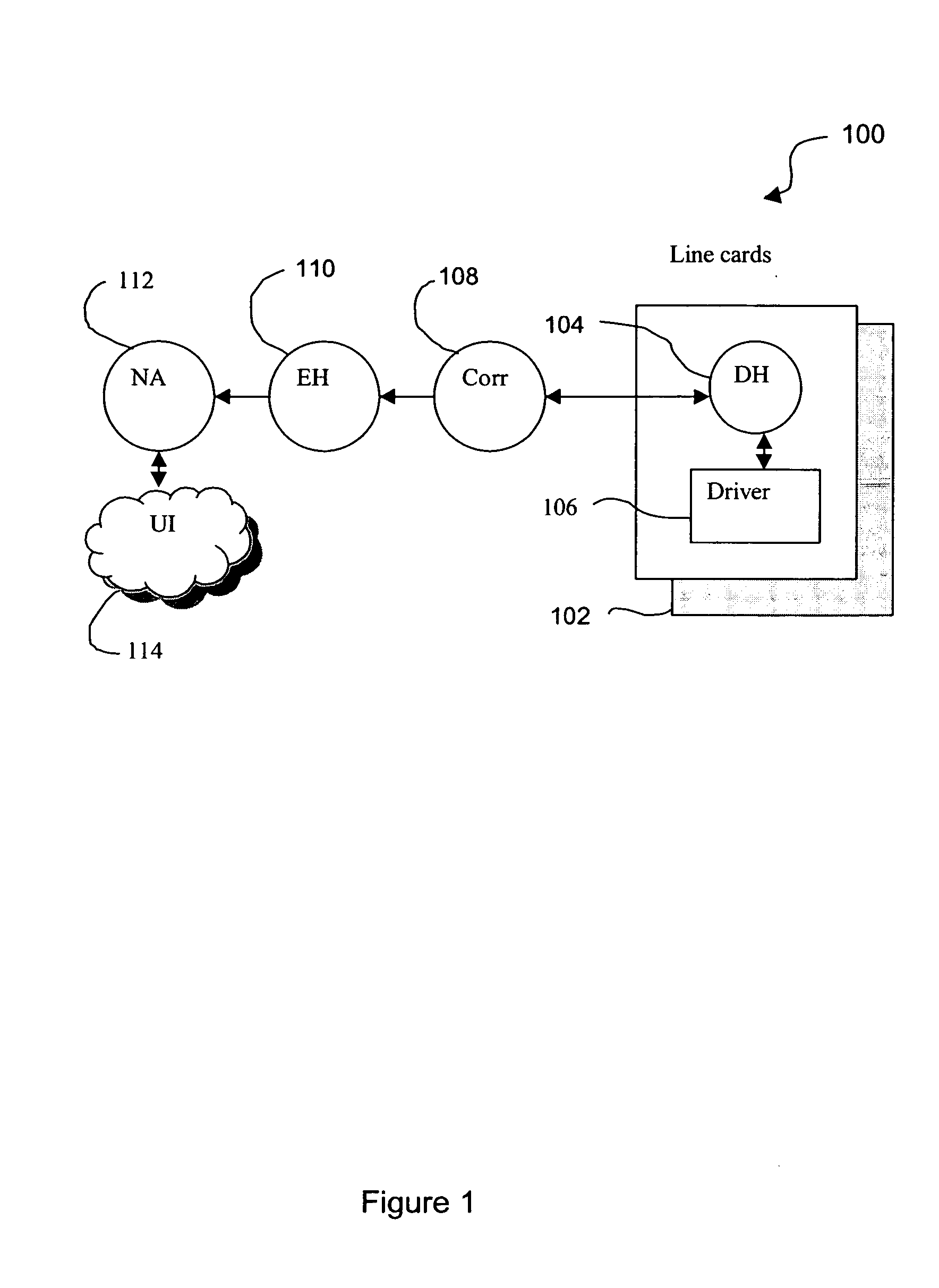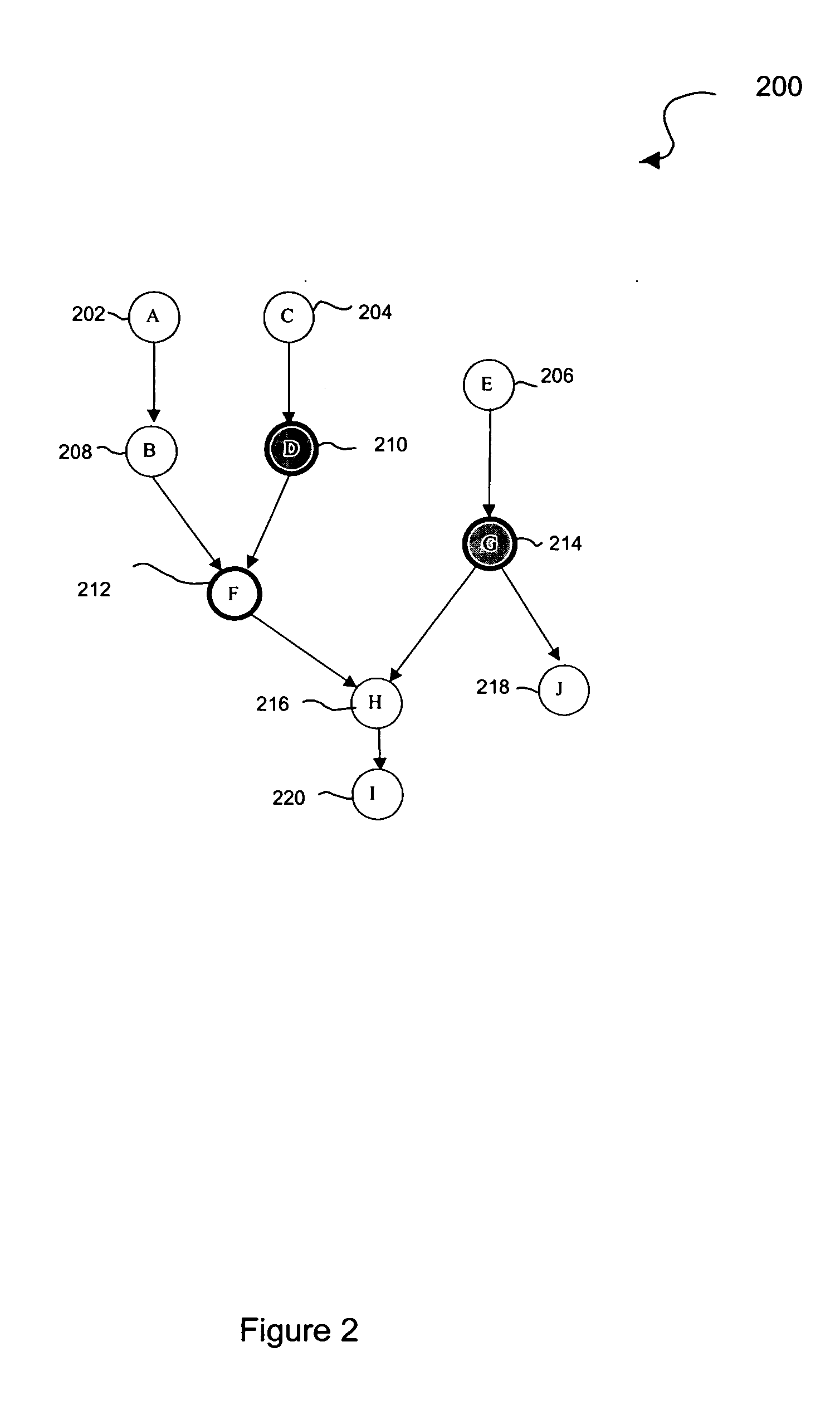Method and system for fault isolation within a network element in an optical network
a fault isolation and optical network technology, applied in the field of optical communication networks, can solve the problems of system alarms, network elements in optical networks are subject, and system alarms can be raised, and the system can however give rise to multiple alarms detected
- Summary
- Abstract
- Description
- Claims
- Application Information
AI Technical Summary
Benefits of technology
Problems solved by technology
Method used
Image
Examples
Embodiment Construction
[0019] Multiple alarms may appear against many cards in the NE when a fault occurs. The focus here is on alarms that will appear against many cards in the NE when the fault occurs. This invention reduces the number of alarms presented to the user to a minimum set in order to help diagnose the problems. The root cause alarms that correspond to the root cause fault conditions in the system are displayed and all correlated non-root cause alarms within any network element in the optical network are masked.
[0020] Tropic Network's Wavelength Tracker technology is useful in monitoring of optical networks that contains optical channel paths. Monitoring of faults that give rise to alarms in the optical channel layer is achieved by deploying Wavelength Tracker. A light path to be monitored on an optical network can be identified by using Wavelength Tracker. The Wavelength Tracker technology applies a unique optical signature to each wavelength (channel) at the Dense Wavelength Division Multi...
PUM
 Login to View More
Login to View More Abstract
Description
Claims
Application Information
 Login to View More
Login to View More - R&D
- Intellectual Property
- Life Sciences
- Materials
- Tech Scout
- Unparalleled Data Quality
- Higher Quality Content
- 60% Fewer Hallucinations
Browse by: Latest US Patents, China's latest patents, Technical Efficacy Thesaurus, Application Domain, Technology Topic, Popular Technical Reports.
© 2025 PatSnap. All rights reserved.Legal|Privacy policy|Modern Slavery Act Transparency Statement|Sitemap|About US| Contact US: help@patsnap.com



